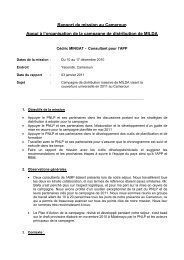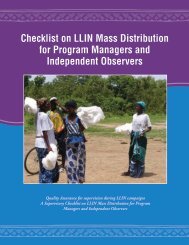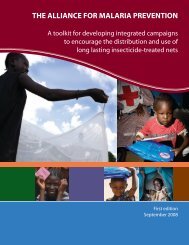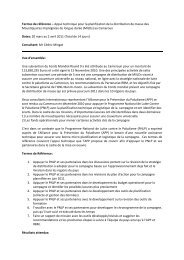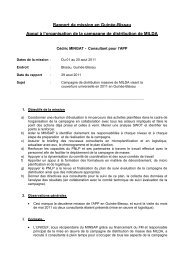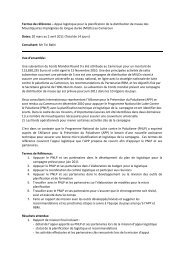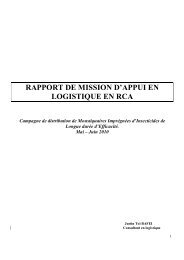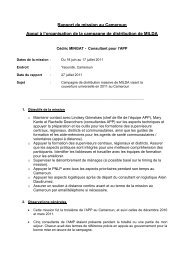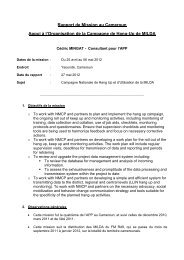Spots - Roll Back Malaria
Spots - Roll Back Malaria
Spots - Roll Back Malaria
- No tags were found...
You also want an ePaper? Increase the reach of your titles
YUMPU automatically turns print PDFs into web optimized ePapers that Google loves.
STEP 1: GATHER INFORMATION, BUILD YOUR TEAM, PLAN YOUR SPOT• Familiarity with local target populations through community interaction oroutreach• Research or evaluation expertise, including pretesting• Radio production skills• Access to radio and audio production facilitiesAn example of a four-person team that combines the desired expertise could includesomeone from an NGO or local program working on malaria, a local health educatoror member of the local Information, Education, Communication (IEC) working group,a malaria focal person and a producer from the local radio station. However, interestin malaria prevention and treatment may also go well beyond this core group. Bealert for opportunities to open new channels of communication and create workingrelationships with other agencies, NGOs and even businesses that share an interest infighting malaria and can support your efforts.GATHER INFORMATION ABOUT YOUR POTENTIAL AUDIENCESFrom your communication objectives, you have identified at least one targetaudience, the specific group of people your message is intended to reach. We oftendistinguish between primary and secondary target audiences. A primary targetaudience includes those your message is designed to directly affect, that is, thosewhose behavior you want to influence. A secondary audience includes those whoinfluence the primary audience (such as a family member or community leader).A target audience can be described in many ways. Demographic characteristics areoften used, such as income level, age (or age of their children), where they live(towns or rural areas) location, gender, language spoken or employment status.Audiences can also be described by other factors, such as behaviors, values andknowledge. The most important audiences for malaria prevention messages arefamily members who make decisions about the household. Secondary audiencesmay be community leaders or others that influence families.For example, your primary target audience may be rural mothers with childrenunder five who have a fever. The secondary audience may be the health workerswith whom they come in contact. Another secondary audience may be the fathersor other caretakers, such as grandmothers.Before developing any materials, get a good understanding of potential targetaudiences, specifically who they are, what they believe and what they do and do notdo. When you listen to a radio spot, it should be clear exactly to whom the materialis talking. If you know your audience well, it will be reflected in your spot, and yourmessage will more likely be heard by your audience. Here are some key questionsabout target audiences:16Spot On <strong>Malaria</strong>: Guide




